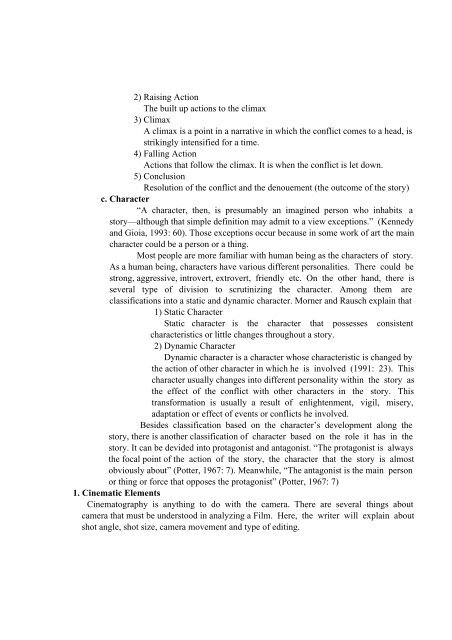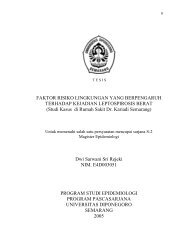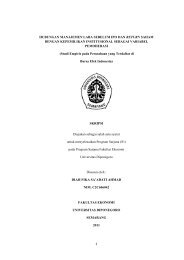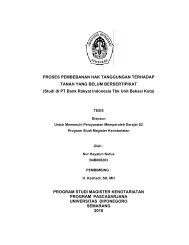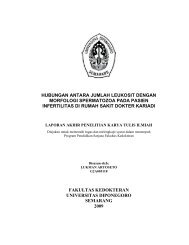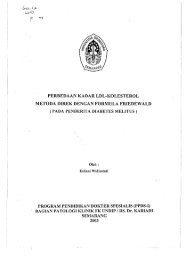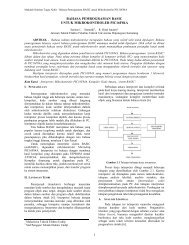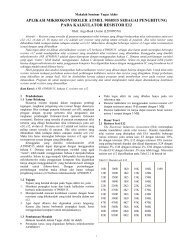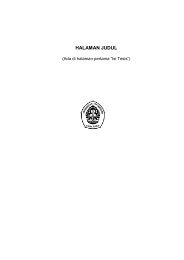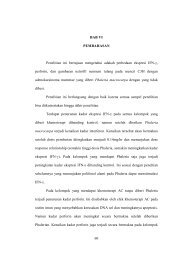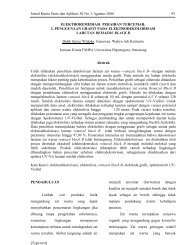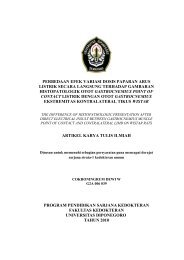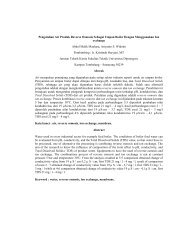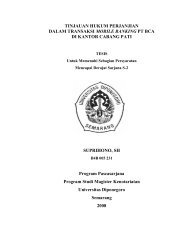the social movement of gay community in gus van sant film entitled ...
the social movement of gay community in gus van sant film entitled ...
the social movement of gay community in gus van sant film entitled ...
You also want an ePaper? Increase the reach of your titles
YUMPU automatically turns print PDFs into web optimized ePapers that Google loves.
2) Rais<strong>in</strong>g Action<br />
The built up actions to <strong>the</strong> climax<br />
3) Climax<br />
A climax is a po<strong>in</strong>t <strong>in</strong> a narrative <strong>in</strong> which <strong>the</strong> conflict comes to a head, is<br />
strik<strong>in</strong>gly <strong>in</strong>tensified for a time.<br />
4) Fall<strong>in</strong>g Action<br />
Actions that follow <strong>the</strong> climax. It is when <strong>the</strong> conflict is let down.<br />
5) Conclusion<br />
Resolution <strong>of</strong> <strong>the</strong> conflict and <strong>the</strong> denouement (<strong>the</strong> outcome <strong>of</strong> <strong>the</strong> story)<br />
c. Character<br />
“A character, <strong>the</strong>n, is presumably an imag<strong>in</strong>ed person who <strong>in</strong>habits a<br />
story—although that simple def<strong>in</strong>ition may admit to a view exceptions.” (Kennedy<br />
and Gioia, 1993: 60). Those exceptions occur because <strong>in</strong> some work <strong>of</strong> art <strong>the</strong> ma<strong>in</strong><br />
character could be a person or a th<strong>in</strong>g.<br />
Most people are more familiar with human be<strong>in</strong>g as <strong>the</strong> characters <strong>of</strong> story.<br />
As a human be<strong>in</strong>g, characters have various different personalities. There could be<br />
strong, aggressive, <strong>in</strong>trovert, extrovert, friendly etc. On <strong>the</strong> o<strong>the</strong>r hand, <strong>the</strong>re is<br />
several type <strong>of</strong> division to scrut<strong>in</strong>iz<strong>in</strong>g <strong>the</strong> character. Among <strong>the</strong>m are<br />
classifications <strong>in</strong>to a static and dynamic character. Morner and Rausch expla<strong>in</strong> that<br />
1) Static Character<br />
Static character is <strong>the</strong> character that possesses consistent<br />
characteristics or little changes throughout a story.<br />
2) Dynamic Character<br />
Dynamic character is a character whose characteristic is changed by<br />
<strong>the</strong> action <strong>of</strong> o<strong>the</strong>r character <strong>in</strong> which he is <strong>in</strong>volved (1991: 23). This<br />
character usually changes <strong>in</strong>to different personality with<strong>in</strong> <strong>the</strong> story as<br />
<strong>the</strong> effect <strong>of</strong> <strong>the</strong> conflict with o<strong>the</strong>r characters <strong>in</strong> <strong>the</strong> story. This<br />
transformation is usually a result <strong>of</strong> enlightenment, vigil, misery,<br />
adaptation or effect <strong>of</strong> events or conflicts he <strong>in</strong>volved.<br />
Besides classification based on <strong>the</strong> character’s development along <strong>the</strong><br />
story, <strong>the</strong>re is ano<strong>the</strong>r classification <strong>of</strong> character based on <strong>the</strong> role it has <strong>in</strong> <strong>the</strong><br />
story. It can be devided <strong>in</strong>to protagonist and antagonist. “The protagonist is always<br />
<strong>the</strong> focal po<strong>in</strong>t <strong>of</strong> <strong>the</strong> action <strong>of</strong> <strong>the</strong> story, <strong>the</strong> character that <strong>the</strong> story is almost<br />
obviously about” (Potter, 1967: 7). Meanwhile, “The antagonist is <strong>the</strong> ma<strong>in</strong> person<br />
or th<strong>in</strong>g or force that opposes <strong>the</strong> protagonist” (Potter, 1967: 7)<br />
1. C<strong>in</strong>ematic Elements<br />
C<strong>in</strong>ematography is anyth<strong>in</strong>g to do with <strong>the</strong> camera. There are several th<strong>in</strong>gs about<br />
camera that must be understood <strong>in</strong> analyz<strong>in</strong>g a Film. Here, <strong>the</strong> writer will expla<strong>in</strong> about<br />
shot angle, shot size, camera <strong>movement</strong> and type <strong>of</strong> edit<strong>in</strong>g.


